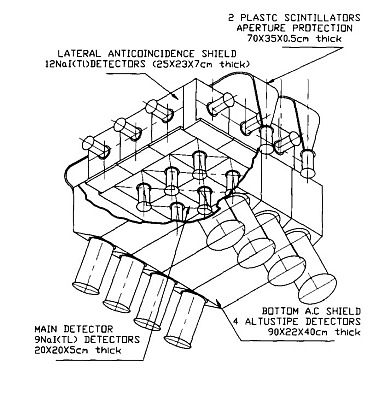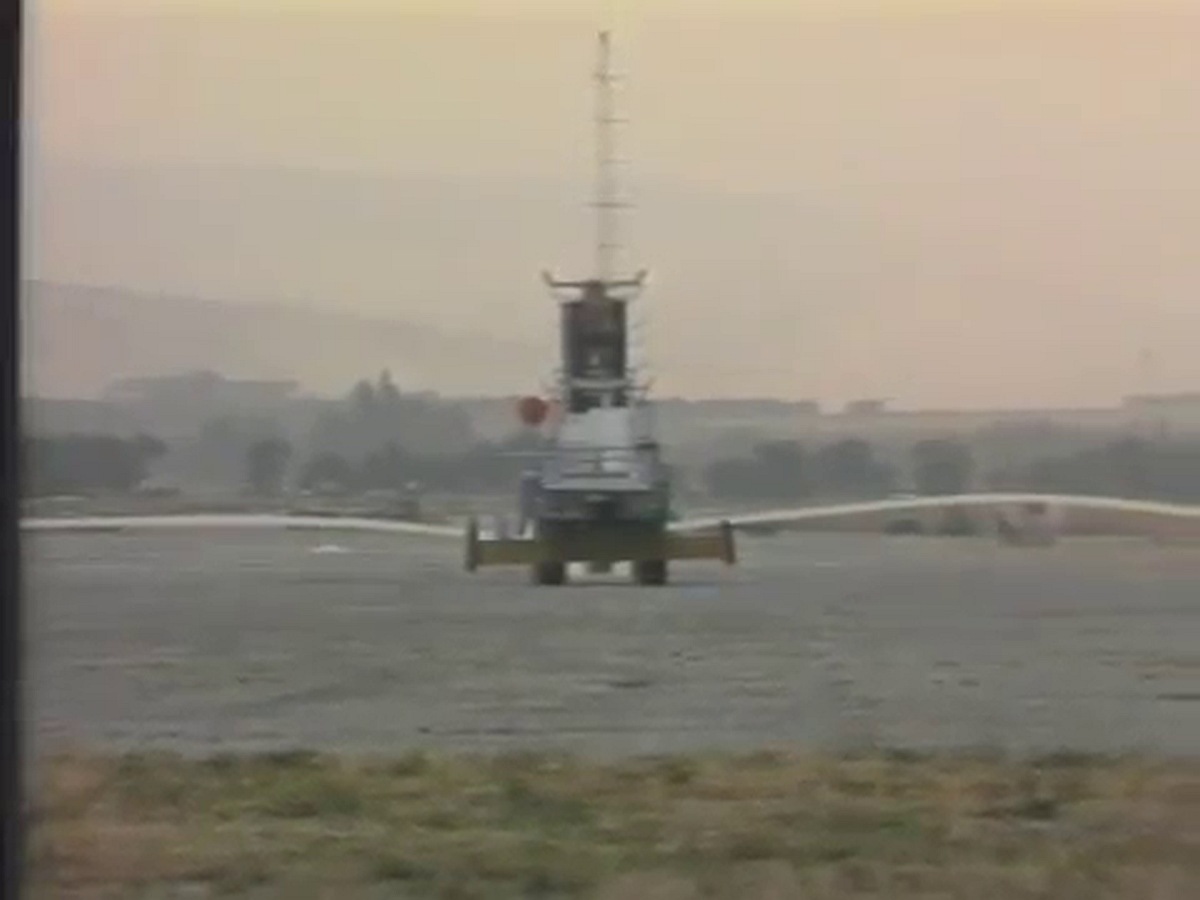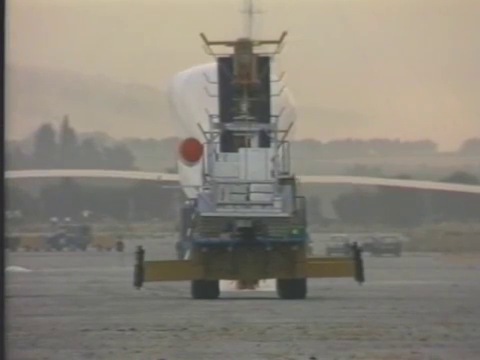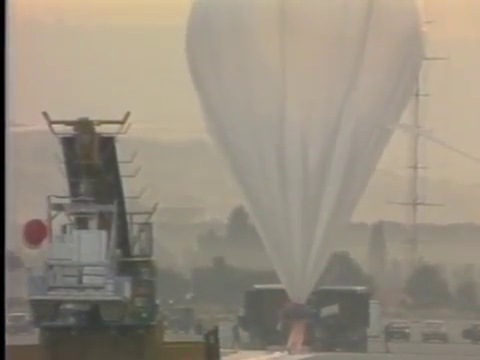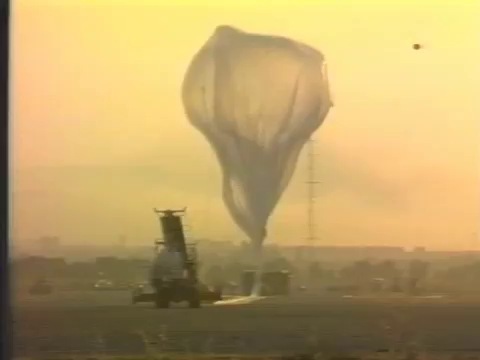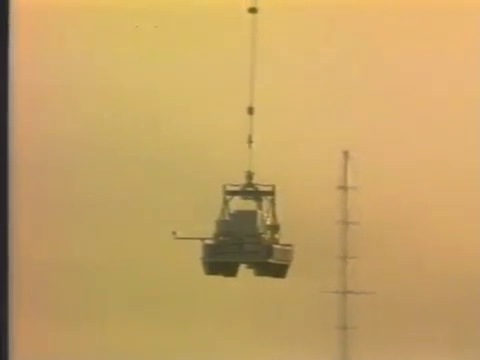Purpose of the flight and payload description
FIGARO was the acronym of French-Italian GAmma Ray Observatory, which were a series of balloon-borne experiments specifically designed to observe gamma rays in the 0.15-6 MeV energy range from sources with a definite time signature. As the name implies it was a cooperative development between research institutions which included: Istituto di Fisica Cosmica e Informatica, CNR, Palermo, lstituto di Astrofisica Spaziale (IAS) Frascati and Istituto Astronomico, Universitá "La Sapienza", Roma in the Italian side while France participated through the Centre d'Etude Spatiale des Rayonnements (CESR), Toulouse and the Centre d'Etudes Nucleaires (CEN) in Saclay.
Following the total destruction of the first iteration of the instrument in a free-fall from the stratosphere in 1983, a second instrument was built. In the figure at left we can see an scheme of the composition of this second version known as FIGARO II (click to enlarge). It consisted of a principal detector of Nal(TI) surrounded by a system of active shields in order to reduce the background counting rate and to reject charged particles. The main detector was made of 9 identical square crystals of Nal(TI) with a side length of 20 cm and a thickness of 5 cm. The total geometric area was therefore 3.600 cm2. Each crystal was surrounded by thin Millipore paper acting as light diffuser, and was enclosed in an aluminium case with a 1.5 mm thick upper window. In order to save volume no light pipe was used and the scintillation light was collected directly by a 3 inches photomultiplier through a borosilicate glass window in the centre of the tile. Each photomultiplier was enclosed, together with the voltage divider, the high voltage supply and the preamplifier, inside its own pressurized aluminium vessel. The nine vessels were then placed within cavities left empty in the bottom shield.
Along the four sides of the principal detector there were a wall of twelve Nal(TI) blocks; any individual block had dimensions 23 cm X 25 cm X 7 cm, and was viewed by a photomultiplier identical to, and arranged in the same way as, the main detector photomultipliers. The rim of the wall was 20 cm higher than the entrance window, reducing the field of view to about 72º FWHM along the sides and to about 77º along the diagonals.
In the lower part of the experiment four thick blocks of plastic scintillator acted as an anticoicidence system against upward moving atmospheric gamma rays and charged cosmic rays. The shape of each block was irregular because they were specifically designed to house the photomultipliers of the main detector. Each block was viewed by two 5 inches photomultipliers, and the surface was covered with Millipore paper in order to improve the light collection. Downward moving charged particles of low energy were rejected by an upper shield. It was made of the same plastic scintillator as the lower shield, and consisted of two adjacent pieces of 75 cm X 35 cm x 0.5 cm, fixed on top of the lateral wall. The scintillation light from each sheet was collected by two photomultipliers through adiabatic light pipes connected to the short sides. The in-flight control of possible drifts of the gains of the main detector modules was achieved by means of a weak sodium 22 source, plus a BGO crystal scintillator enclosed in a pressurized vessel together with photomultiplier, preamplifier and power supply. This auxiliary detector was placed at the top of a vertical rod about 90 cm above the detector window.
Finally the whole instrument was fixed on a robust metallic frame able to rotate around a horizontal axis up to 50º out of the zenith. The balloon platform which supported the gondola (3 m x 2 m x 0.6 m) could also be directed toward any azimuthal direction, measured with respect to the horizontal component of the geomagnetic field. The accuracy of the pointing was about 1º. The balloon pivot was designed under the responsibility of CNES by the firm STEEL.
Details of the balloon flight
Balloon launched on: 7/11/1986 at 5:00 utc
Launch site: Base di Lancio Luigi Broglio, Trapani, Sicily, Italy
Balloon launched by: Agenzia Spaziale Italiana (ASI) / Centre National d'Etudes Spatiales (CNES)
Balloon manufacturer/size/composition: Zero Pressure Balloon Winzen 800.000 m3
End of flight (L for landing time, W for last contact, otherwise termination time): 7/12/1986
Balloon flight duration (F: time at float only, otherwise total flight time in d:days / h:hours or m:minutes - ): 20 h 6 m
Landing site: In Sevilla region, Spain.
Campaign: ODISSEA 86
Overall weight: 4150 kgs
Transmediterranean Flight
This was the first flight of the FIGARO II experiment. The main obervational goal was to observe the Crab pulsar (PSR 0531+21). The 800.000 cubic meters balloon was launched from the base of Milo, near Trapani, Sicily on July 11, 1986 at 5:15 UTC. A ceiling of 4.0 mb was reached three hours thereafter, and was kept with practically no variations for the entire flight. During the final part of the ascent and at ceiling the experiment was pointed in the direction of the Crab pulsar, which was observed for a total time of about two hours before the data reception was temporarily interrupted. Transmitted data were accumulated on ground by means of an analogic tape recorder. The data obtained indicated the possible existence of a feature in the energy spectrum between 0.43 and 0.46 MeV in the phase interval of the second peak of the Pulsar.
External references
- Detection of a feature at 0.44 MeV in the Crab pulsar spectrum with FIGARO II - A redshifted positron annihilation line? Astrophysical Journal, Part 2 - Letters vol. 376, July 20, 1991, p. L11-L15
- Figaro II experiment: description and technical performance Nuclear Instruments and Methods in Physics Research Section A: Accelerators, Spectrometers, Detectors and Associated Equipment, Volume 281, Issue 1, 1989, Pag. 197
- FIGARO: An experiment for pulsar and variable source studies in the MeV range Advances in Space Research, Volume 3, Issue 4, 1983, Pag. 113
- Observation of A0535 + 26 at energies above 150 keV with the FIGARO II experiment Astrophysical Journal, Part 2 - Letters vol. 398, no. 2, p. L103-L106
- The F. I. Ga. R. O. Mission : Observation of the Crab Pulsar in the Low Energy Gamma-Ray Range during the July 86 Transmediterranean Balloon Flight 20th International Cosmic Ray Conference Moscow, Volume 1, p.74
- The FIGARO II experiment: a general outline of the mission and the principal scientific results Il Nuovo Cimento C - September 1992, Volume 15, Issue 5, pp 801-809
- The French program of circumterrestrial magnetic surveys using stratospheric balloons Eos Transactions American Geophysical Union 72(9) - 1991
- The radio-gamma time delay of the Crab pulsar Astron. Astrophys. 290, 503-509 (1994)
2062If you consider this website interesting or useful, you can help me to keep it up and running with a small donation to cover the operational costs. Just the equivalent of the price of a cup of coffee helps a lot.

